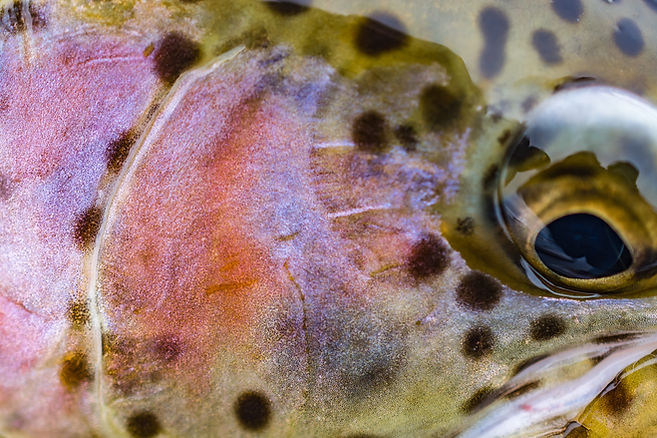
Rhithrogena morrisoni. The Western March Brown. More than any other bug (save for the Salmonfly obviously), I look forward to the emergence of Rhithrogena every spring. And funny enough, for two years in a row I’ve spotted this clinger Mayfly’s first emergence on the same date, May 7. So, why are they called a March Brown then? Way back in the day, when fly angling began taking root in America, the few who were privileged enough to have the opportunity to angle, came from Europe where most of what we knew of fly fishing at the time originated from, including knowledge of the bugs trout ate. And on the East Coast, where fly anglers first plied the waters of the New World, Eastern March Browns (Maccaffertium vicarium) closely resembled the European species Rhitrogena germanica. These big dark brownish Mayflies hatch in March on the other side of the pond, so anglers gave them the common name March Browns. And when anglers in America encountered the similar-looking Maccaffertium vicarium, they adopted the same name. The trend continued when anglers came across what looked like the exact same bugs they called March Browns on the East Coast, out here in the West. And although they’re closely related, our version here in the Rockies is called Rhithrogena morrisoni.
But none of that really matters to the trout.

I doubt there's any environmental condition that prompts them to emerge on a random Tuesday in early May. The science tells us that it's less about the particular day a bug hatches, and more about the previous month's worth or so of environmental conditions. Namely water temperatures. Mean water temperatures at Varney for the last month have been about 45 degrees. Nymphs have been darkening up on the thorax in preparation for takeoff during this time, so that tracks well with what the research tells us. It’s amazing the transformation that occurs with all Mayflies from nymph to dun, but with March Browns it’s even wilder for me. They’re not all that much bigger than the other mayflies nymphs in the water prior to hatching, but the transformation from a size 16 nymph to a size 10 dun is remarkable. How do they do that?! Seeing them on the water with other Mayflies right now really demonstrates how much bigger they are and easily identifiable with they’re darkly marked wings and roughly segmented bodies, much like Drakes.

Typically these bugs aren’t known for massive, dense hatches. They generally hatch sporadically throughout the day. But on their first day in Ennis yesterday, as a snow storm barreled down on the Madison Valley, they crowded eddies on the edges and the fish certainly noticed. It was easily the most dense March Brown hatch I’ve seen on the Upper Madison. But with a north wind gusting 30 yesterday afternoon and snow falling heavily this morning as I write this, my size 10 purple haze will have to wait until the dust settles to chase this hatch. With any luck, we’ll have a couple weeks of solid March Brown activity in Ennis to enjoy.

Check out the video of an eddy with BWOs, Caddis, Midges, a Skawala Stonefly , and freshly emerged March Brown duns in Ennis yesterday. So cool.


Comments